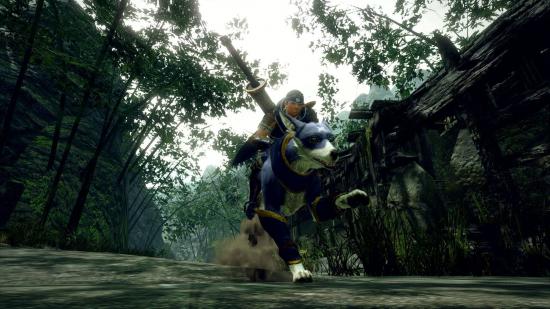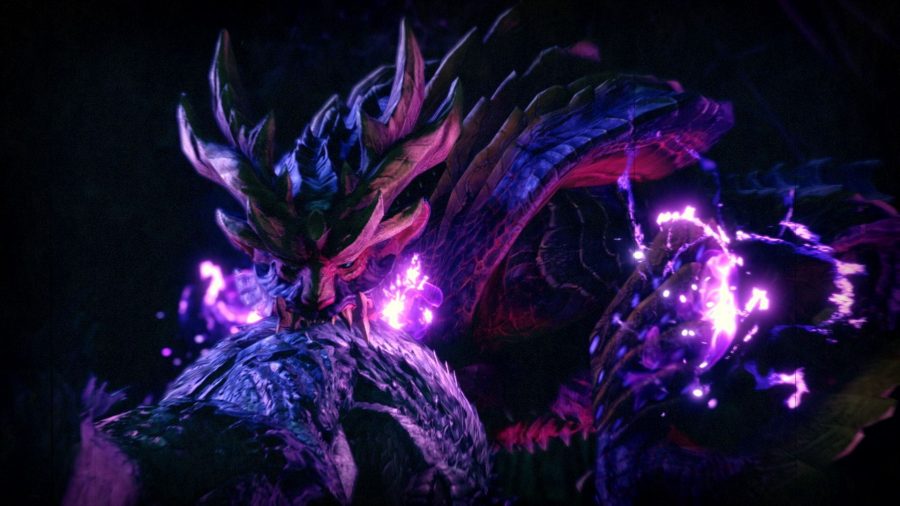I’ve been a recent convert to the Monster Hunter series. It got its start on the PlayStation, but has long been a Nintendo staple, frequently appearing on its handheld systems. A whole host of new fans, myself included, fell in love with Monster Hunter: World for many reasons and were delighted to see that Monster Hunter Rise keeps a lot of what works well.
But before I get into why Monster Hunter: Rise is so exciting, I’d like to impart as to why I struggled to get into any Monster Hunter game prior to World. Every single game has a starting location with quests that require you to gather flowers, or kill the passive fauna. It felt like the beginning of every MMORPG, where you must take down the small fry before battling the bigger monsters.
Monster Hunter: World changed all that, dropping you in the deep end from the get-go, slugging the Great Jagras in the chops. It’s smaller than most of the other wyverns in the game, but it’s the biggest thing I could take on at the beginning, and that felt fun! It also highlighted two other big changes: loading times and tracking.
Before World, hunting monsters in each area meant that you had to splat them with paintballs so you could keep track of where they were at any given time, and wander into loading screens that break the pacing of the game. There’s none of that in World. Instead you use fireflies to track down monsters and there are no loading screens to break your momentum.
This was definitely the biggest change, but there were adjustments that, on the surface seem insignificant, but were game changers in the long run. Drinking potions while walking was not doable in the other games, but World increased the drinking duration in exchange for the ability to walk slowly. I also really like standing at a distance to watch the Turf War duels between two monsters, especially those that came with Monster Hunter: World’s expansion: Iceborne. They make the ecosystem feel alive, with a clear hierarchy of tough monsters that reflect the difficulty of the monster in question.

Speaking of Iceborne, this too brought a great addition in the clutch claw, which drastically altered how you hunted monsters with bigger weapons and made good use of the largely redundant slinger ammo. As long as a monster’s not enraged and is not attacking, shooting it with all your ammo in the face will stagger it, potentially slamming into a wall and knocking itself out for a short time. This introduced new strategies to hunting monsters and is very welcome.
Needless to say, World did a lot for the series, so it was slightly disappointing to hear that the follow up was a Switch exclusive. That said, aside from the fact that a lot of gameplay demos are heavily pixelated messes as they were uploaded at low resolutions, I suspect that Monster Hunter Rise might be even better than World.
What makes Rise so attractive to me is that it keeps everything that made Monster Hunter: World great, but it also looks to fix a few gripes I had with the combat. New moves and ways to get around with the Wirebug look to make navigating more fun, and make combat faster and more varied, particularly for slower weapons like the Great Sword. In World, I pretty much stuck with the Dual Blades because I liked the mobility they gave me while at the same time being simple to understand (the Insect Glaive was too much of a logical leap for me). With Rise, I’m more tempted to bash things with a heavy weapon like the Great Hammer.
There’s an argument that being able to use items like potions, rations, and grindstones while riding the nimble Palamute breaks the game a tad. But I’ll let you in on a little secret: I’m a dog person. Palicos (Palicoes?) are adorable feline sidekicks for sure, but having a canine companion to ride at great speeds and attack enemies in combat means that I can have the best of both worlds. It’s cats and dogs, living together, mass hysteria!
And then there’s the theme. Previous Monster Hunter games didn’t so much have a theme of their own, or at least none that I could decipher from the times I tried them out. World did have a hint of being part of an advance party in search of new land, while also having an environmental message (we’ll just gloss over how it contradicts the whole hunting monsters for parts thing for now), but this didn’t really come together well.
Rise, on the other hand, is leaning heavily on ancient Japanese culture. You only need to look at the architecture of the buildings and the costume designs, and listen to the Koto playing during the music introducing the new monsters. Heck, even the monster designs revealed so far are influenced by Japanese culture in at least some way. Aknosom is a crane, birds that are usually associated with origami as a symbol of peace, while Tetranadon has distinct Kappa vibes. The game’s signature monster, Magnamalo, looks like an Oni of sorts, especially when it has a Tobi-Kadachi in its maw.
We’ve seen very little of Monster Hunter: Rise so far, but with all the lessons learned from World, I do think it’s going to be the best one. I will be eagerly waiting for more details on what’s to come, and videos at higher bit-rates that make it look as good as it should!

